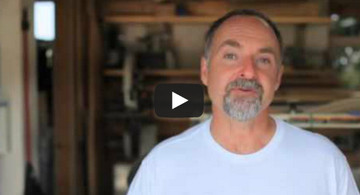Q: What can I do to warm the floors of my 1875 cottage? I recently bit the bullet, went below, and stuffed two layers of insulation batts between the floor joists above the crawl space. The floor is still freezing cold in winter. What did I do wrong?
A: Your mistake is quite common, and it’s an error of both execution and expectation. The problem with cold floors is almost universal in old buildings and cottages with crawl spaces like yours. Without a heated (or semi-heated) basement underneath a floor, cold feet will happen unless you do something that’s hardly ever done. The typical approach is to stuff batts between the joists, as you did, but there are several reasons why this is a bad idea.
Why Are My Floors So Cold?
First of all, the approach you took cannot work. Batt insulation needs to be in a wind-free area to perform well. If there’s air movement through your crawl space (and there should be, these places need ventilation), then batt insulation offers little benefit. Lab tests show that the real world insulation value of fiber-based insulations drops by at least 75% when air moves through the material. An R20 batt, for instance, is probably only functioning at R5 or less. Watch below for my video explanation of the dynamic that greatly reduces the effectiveness of fiber-based insulation.
Another problem is the need to support batts physically. Even though your batts are held in place by friction between the joists right now, vibrations caused by people walking on the floor will probably jiggle it loose in time. I see it all the time. And yes, you can support the batts with chicken wire or something, but that only gives enough time for another problem to set in.
Batts in the floor joist above a crawl space leads to the distinct possibility that rodents or squirrels will set up house in that insulation, or steal it and use it on their own DIY projects elsewhere. Any moisture rising from the earth could also seep into the batts and cause mold to form on your floor frame. Like I said, fiberglass insulation in floor frames isn’t good. Just about the only positive thing is that the existing floor covering in the room usually acts as a sufficient vapour barrier on the so-called “warm” side of the installation. No need to worry about plastic.
How Do I Make Floors Over a Crawlspace Really Warm?
Do you really want to make your floor warm? It’s not easy but it can be done. The very best option involves laying down at least 2″ of rigid extruded polystyrene foam on top of the old floor, then adding a layer of 1/2″ plywood on top (as a second subfloor), secured with screws driven down into the floor frame, followed by a new finished on top.
You can also achieve similar results by wrestling one or two 2-inch layers of extruded poly foam between the floor joists, but it’s a ton of trouble and requires much more care. Cut each piece so there’s a 3/4″ gap all around, glue the foam to the underside of the subfloor with construction adhesive or hot melt glue, then fill the peripheral gaps with expanding poly foam. This creates an unbroken layer of insulation, with no chance that air will seep behind the foam and condense.
Even with all this happening correctly, you might still find the floor cool (and even cold if it gets down to, say, -20ºF). I know from experience with many buildings that insulation alone is never enough to make floors really warm when they’re over an unheated crawl space. Electric radiant heating cables installed underneath a new finished floor will work for sure, though it’s only economical when used in conjunction with great insulation. Heating cables like this aren’t enough to heat the space very effectively on their own, but they sure do make the floor truly toasty and warm.
Click below for a video showing how I use rigid foam to insulate floors and roofs from the top when special circumstances arise.












